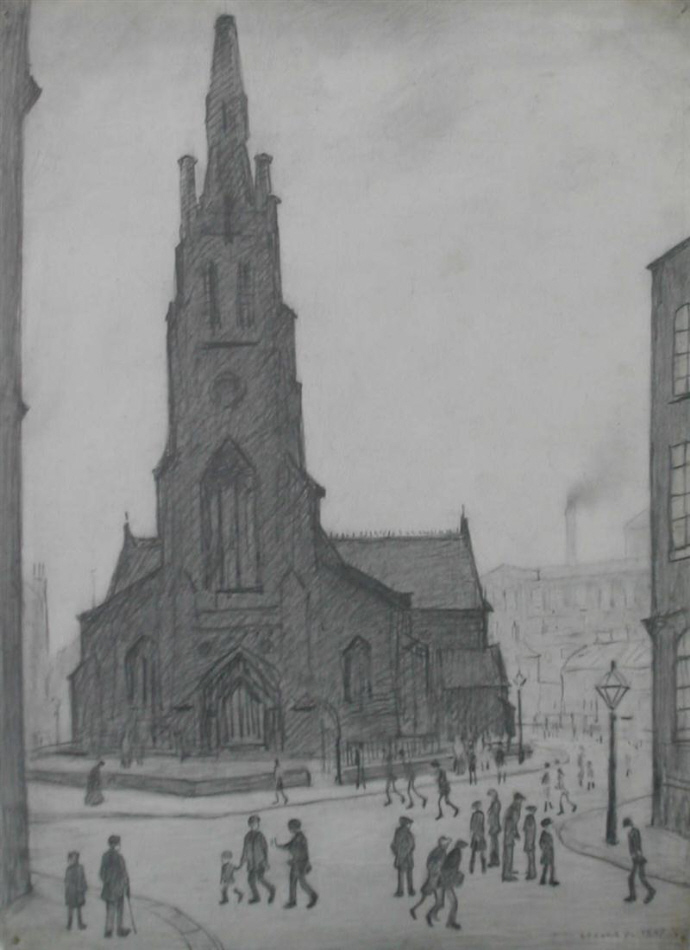St. Simon's church
L.S. Lowry
R.B.A., R.A.
"St. Simon's Church"
St Philip's is constructed in ashlar stone.
Image size
Original drawing,
Its architectural style is Greek Revival.
It has an undivided plan, with a semicircular portico to the south surmounted by a bell tower.
The body of the church is expressed as two storeys. The windows in the upper storey are round-headed, and those in the lower storey are straight-headed.
There are nine bays along the north and south sides, and three bays along the east and west sides. The central three bays on the south side are occupied by the portico that encloses a semicircular porch.
The portico is carried on an Ionic colonnade with a balustraded parapet.
The bell tower has plain pilasters between, which are round-arched openings that are alternately open and blind. Above this stage are four clock faces, and the summit is capped by a dome.
The clock was made by Whitehurst and Company of Derby.
On the west front are three doorways; the central bay projects slightly forwards, and has a pediment above the doorway.
Inside the church are galleries on three sides. The stained glass in the east window dates from the mid to late 19th Century, and was designed by R. B. Edmundson of Manchester.
In the southeast chapel is a memorial to the First World War by Humphries, Jackson and Ambler, also of Manchester.
The two-manual organ was made by Renn and Boston in 1829.
It was moved forwards from a position above the west door to the west gallery in 1873 by Alex Young and Company, who also carried out modifications.
The organ was cleaned and restored in 1915 by Wadsworth and Company.
In 1963, Noel Mander, who respected the historical importance of the instrument, carried out a further restoration that reversed some of 1873 modifications.